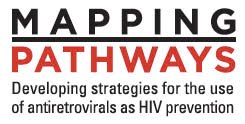At present, India has approximately 2.4 million people living with HIV out of its total population of approximately 1,210 million people (a prevalence of 0.03%). In 2009, close to 1.2 million people were newly infected. According to a recent United Nations report, there has been a 50 percent decline in the number of new HIV infections in the country over the last decade.
India has made significant strides in tackling HIV/AIDS in recent years, with the government’s efforts actively being supported by the Bill & Melinda Gates Foundation, the World Bank, and the United States Agency for International Development. Many Indian NGOs work to provide care facilities, ARV medicines and education for people living with HIV. There has also been consistent work towards spreading awareness, from communicating key messages though concerts, radio shows, and TV spots with famous Bollywood stars to innovative initiatives such as promoting condom use through kite flying during popular festivals.
However, much remains to be done. “Most importantly, the government needs to step in because we need better laws – laws that will enable behavior change and help us fight HIV effectively. There are some draconian laws that stigmatize sex workers and intravenous drug users, making life very unsafe for them. MSM community building is nearly impossible due to the hostile environment. Sex education also needs to be made legally mandatory in the school system. These steps would help bring about real change,” says Anjali Gopalan, Executive Director of NAZ India, a Mapping Pathways partner organization.
How is India responding to pre-exposure prophylaxis (PrEP)? Says Anjali, “My sense is that many people are still very uncomfortable and not quite able to figure out why we’re talking about PrEP in the Indian context. Many senior people in the field feel the focus needs to be on TLC+.” There could be a few reasons for this view. First, India is a low-prevalence country, and people in the HIV prevention field believe this makes it very different from places like South Africa where the prevalence among the general population is very high. Second, there have been great difficulties in procuring ARV drugs for people living with HIV recently. “There are massive stockouts – the government is saying they don’t have the money to buy more drugs – we’re trying to move drugs from centers where they are less utilized to others where they are needed more. There is a lot of concern in the country, especially with global funding not available right now,” explains Anjali.
When it comes to PrEP, the common view in India (and elsewhere) appears to be that to take away dwindling funding and hard-to-get ARV drugs from HIV-positive people and directing them toward HIV-negative people is not a realistic or justifiable step. Of course, others are quick to point out that it is not a case of either/or – PrEP is simply one more new tool with which to prevent HIV infections. The public health community is still in the phase of gathering data on PrEP and figuring out the best possible way to utilize this new option in a variety of regions with different target populations.
Cultural differences may also play a part. For instance, homosexuality is still largely taboo in India and drug users are commonly seen as people who “knowingly put themselves at risk”. Discordant couples face a similar issue: No-one sees a problem with giving ARV drugs to people who are infected. But some doctors and social workers have indicated an aversion to giving drugs to those who are not infected on the assumption that they may indulge in high-risk behavior.
There are other significant questions for India, and for other countries contemplating whether they will implement PrEP or not: How does one ensure compliance among people who are healthy? How does one ensure that side-effects, if any, are taken care of? How would one follow up? Will private practitioners be involved? India is still grappling with basic infrastructural and supply-chain issues, which makes these extremely important concerns.
“The Mapping Pathways team is trying to help answer these very questions,” says Jim Pickett, Director of Prevention Advocacy and Gay Men's Health at the AIDS Foundation of Chicago, chair of IRMA (International Rectal Microbicide Advocates), and a member of the Mapping Pathways team. “It’s time to gather all of this new data that’s pouring in and make sense of it, see how it can be applied in real scenarios. PrEP might make sense for some communities and situations, and it might not for others. Our end goal is to give decision-makers all the information they need to make informed decisions.”
[Content that is linked from other sources is for informational purposes and should not construe a Mapping Pathways position.]


No comments:
Post a Comment